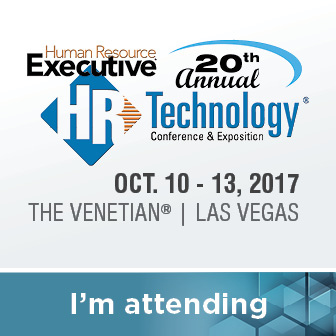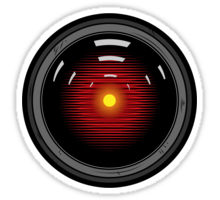HRE Column: #HRTech and Diversity and Inclusion
Once again, I offer my semi-frequent reminder and pointer for blog readers that I also write a monthly column at Human Resource Executive Online called Inside HR Tech that can be found here.
This month, I take a look at some of the HR Technology developments that are helping organizations work through the challenges and opportunities of an increased focus on diversity, inclusion, and fairness. Some of this work has been top of mind for me due to the time I am spending on organizing the second Women in HR Technology Summit that will be held at the HR Technology Conference in October. And the continuing focus and spotlight being placed on these issues, especially for tech companies, make this issue and the technologies that can help with it, an incredibly important focus area for HR tech.
So in this month's HR Executive column I examine a a few of the technologies and trends that are becoming more important in this area, and how these technologies can help inform and shape the design, development, and deployment of programs and initiatives in 2017, and beyond.
This is an important issue, that we will be covering in more depth as 2017 progresses, and of course, at HR Tech in October.
From the HRE piece:
One of the highlights of last year's HR Technology Conference® and Exposition was our first-ever "Women in HR Technology" summit on the first day of the event. This session was developed to focus on and raise awareness of many of the issues facing women in technology roles generally, and in the HR technology industry more specifically.
Additionally, we also tried to showcase many of the individual success stories from the many HR and HR technology leaders who participated in the summit, with the idea that their stories of personal and organizational achievement and impact would help educate and inspire the audience. The program was received positively, with standing-room-only attendance, and I have since been acting on numerous recommendations to expand it at this fall's conference.
Tech firms' ability to attract, recruit, develop and fairly compensate women and other underrepresented groups is an issue that continues to be top of mind for many HR and business leaders. And when there exists a compelling business or workplace need or opportunity, HR technology solutions and services will be developed or be adapted to attempt to meet these needs. Increasingly, a number of HR technology solutions have been created or have been enhanced to deliver functionality and insights to help HR and business leaders attract more diverse candidates, reduce the impact of bias in talent management decision making, and monitor and audit compensation programs and practices for fairness and equity across the organization.
Let's examine a few of these new and emerging HR technology solutions that help HR and business leaders promote and support the increasingly common and important goals of workplace diversity, inclusion, fairness and equity. We'll also explore how these technologies can help make a difference for organizations working towards meeting these goals.
Talent Sourcing
One of the primary reasons cited by organizations for their inability to build more diverse teams -- particularly for technical or engineering functions -- is a lack of qualified candidates at the beginning of the recruiting process. Many organizations say they would love to hire more female engineers or more people from underrepresented groups for these roles, but they simply are not able to find interested and qualified candidates. While there is debate over whether there's truly a so-called "skills mismatch" for these roles that is driving this challenge, there are some HR technology solutions that have been developed to address this "top of the funnel" issue and help HR and business leaders find more diverse candidates.
Entelo, a past recipient of the "Awesome New Technology for HR" recognition at HR Tech, has a product called Entelo Diversity that allows organizations to find and identify candidates based on gender, race or ethnicity, and even veteran status. This information and these indicators are layered on top of the candidate's skills profile to help organizations see a complete picture of the candidate, which will support diversity recruiting efforts. The Entelo algorithm is designed to help identify candidates who may meet these criteria without relying on specific keywords such as "black," "female," "veteran," etc. Using data about a person's academic history, social affiliations and job titles, the algorithm determines his or her likely gender, ethnicity or race, and whether the person has military experience. Tools such as Entelo Diversity and other advanced candidate-sourcing tools can augment the networks of an organization's recruiters and hiring managers, which may be otherwise lacking members of many underrepresented groups.
Read the rest at HR Executive Online...
If you liked the piece you can sign up over at HRE to get the Inside HR Tech Column emailed to you each month. There is no cost to subscribe, in fact, I may even come over and re-seed you lawn, take your dog for a walk, or help you plant your spring flowers. I especially like alstroemelias.
Have a great day!

 Steve
Steve


